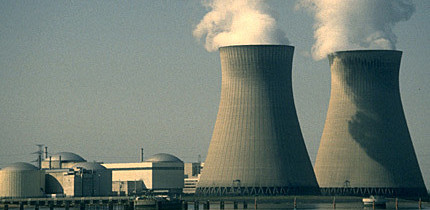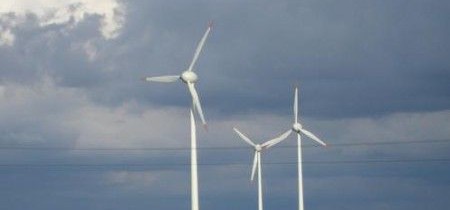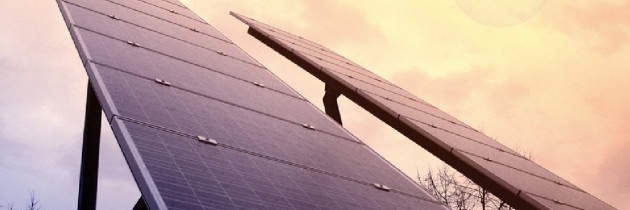Europe’s drive toward a power system based on renewable energy has gone so far that output will probably need to be cut within months because of oversupply.
Network operators are likely to curb solar and wind generation at times of low demand to prevent overloading the region’s 188,000 miles (302,557 kilometers) of power lines, Entso-e, the grid association in Brussels, said last month. Renewable output is poised to almost double to 18 percent by 2020, according to Energy Brainpool GmbH & Co. KG, a consulting firm in Berlin.
Europe’s fivefold surge in green energy in the past decade pushed prices to a nine-year low and wiped out $400 billion in market value of utilities from Germany’s RWE AG (RWE) to GDF Suez SA in Paris. There’s so much power available on windy and sunny days in Germany and Austria that the number of hours producers had to pay consumers to use it doubled in the first five months of 2014, data from the Epex Spot SE exchange in Paris show.
“The system is costly and we need intelligent answers,” Johannes Teyssen, chief executive officer of Dusseldorf, Germany-based EON SE, said June 2 in an interview at the Eurelectric conference inLondon. “There are some hours where it is inevitable that we will be oversupplied.”
The expansion of renewables is at the center of the European Union’s unprecedented effort to cutcarbon emissions by 20 percent from 1990 levels by the end of the decade. Governments in the 28-nation bloc are discussing accelerating reductions to 40 percent by 2030.
German Prices
Year-ahead electricity prices in Germany, a European benchmark, dropped 0.3 percent to 34.15 euros ($46.59) a megawatt hour, according to broker data compiled by Bloomberg. The contract fell more than 60 percent from a June 2008 peak as renewables boosted supply and the 18-nation euro region’s longest recession cut demand. Forward markets show costs will decline for another four years.
“In some member states we have been too fast,” in expanding renewables, the European Union Energy Commissioner Guenther Oettinger said June 3 in an interview at the Eurelectric conference. The region needs better infrastructure to integrate the new power, he said.
Europe’s production of renewable energy stretches from reservoirs in Romania to offshore wind parks in the U.K. The European Commission says 200 billion euros is needed to upgrade power and gas grids by 2020.
Summer Outlook
Eight countries from Germany to Bulgaria will need to export or curtail generation, including renewables, at times of low demand during most of this summer, Entso-e said in its May 22Summer Outlook. Risks to grid operations will be most acute in Bulgaria, Spain and Romania, where capacity to ship power to neighboring countries is less than what’s needed, the 41-member group said.
“It is hard to predict when the grid operator will intervene and for how long and it’s a big problem,” said Burkhard Steinhausen, whose team at Trianel GmbH manages the output of 3,000 megawatts of renewable capacity on behalf of producers. A supply of 1,000 megawatts is enough to power about 2 million European homes.
“If the grid isn’t expanded at the same pace as renewables expansion, then it will happen more often,” he said June 4 by phone from Aachen, Germany.
Demand in Germany, Europe’s biggest power market, fluctuated between 78 gigawatts at 11:30 a.m. Berlin time and 40 gigawatts at 2:30 a.m. on June 2, according to a Bloomberg model. The difference is the same as the capacity of about 25 nuclear reactors.
Switching Off
“There will be times when wind power will be too much for demand and this will become more common as wind power capacity increases,” Gary Hornby, an energy analyst at Inenco Group Ltd. in Lytham St. Annes, England, said May 29 by e-mail. Curtailment “is a byproduct of investing heavily in intermittent technologies such as wind and solar,” he said.
Rather than switching off or curbing output at coal and nuclear plants that take hours to return to full output, some producers may keep generating, knowing prices may turn negative, which means they’ll have to pay users to take the power.
There were 55 hours of negative prices on the German and Austrian intraday and day-ahead markets in the first five months of 2014 compared with 27 hours a year earlier, according to Epex. German solar output surged 83 percent in the first three months, while onshore wind generation gained 21 percent and offshore wind 34 percent, according to the German Association of Energy & Water Industries, a Berlin-based lobby group known as BDEW.
EU Subsidies
The EU needs to get the quantities of renewable energy being produced “under control,” Henri Proglio, chief executive officer of Electricite de France SA, the world’s biggest operator of nuclear plants, said June 2 at the Eurelectric conference. “The more renewables you add in to the system, the more costs you add in subsidies or otherwise.”
European governments handed out $57 billion in 2012 for green energy projects, more than half of the global $101 billion, according to the International Energy Agency in Paris.
Investment in new European projects slowed to $43 billion last year from as much as $80.2 billion in 2012, according to Bloomberg New Energy Finance in London.
The spending came even as EU power demand peaked in 2008 and is poised to slide 0.3 percent this year, according to IHS Inc., a consulting firm based in Englewood, Colorado.
“Demand has been in a declining trend with lower year-on-year consumption making the grid operators worried, as they also have to manage simultaneously a large influx of intermittent generation,” Paolo Coghe, a senior analyst for European power, coal and carbon at Societe General SA, said May 23 by phone from Paris.
Curtailment Compensation
Renewable producers typically get compensated to curtail output. Payments by the U.K.’s National Grid Plc (NG/) to wind power generators rose to 47.3 million pounds ($79.5 million) in the 12 months through March from 7.6 million pounds a year earlier, according to the London-based company. Constraint payments to wind farms occur during grid repairs, high winds, low demand or overcapacity on the grid, Rebecca Watson, a company spokeswoman, said May 30 by e-mail.
To Oeystein Loeseth, chief executive officer of Sweden’s Vattenfall AB, the market could have been better designed. To pay subsidies to build renewables and then pay to have them stop when demand is low “is very cost inefficient,” he said June 2 in London.
Fonte: Bloomberg
Read More







